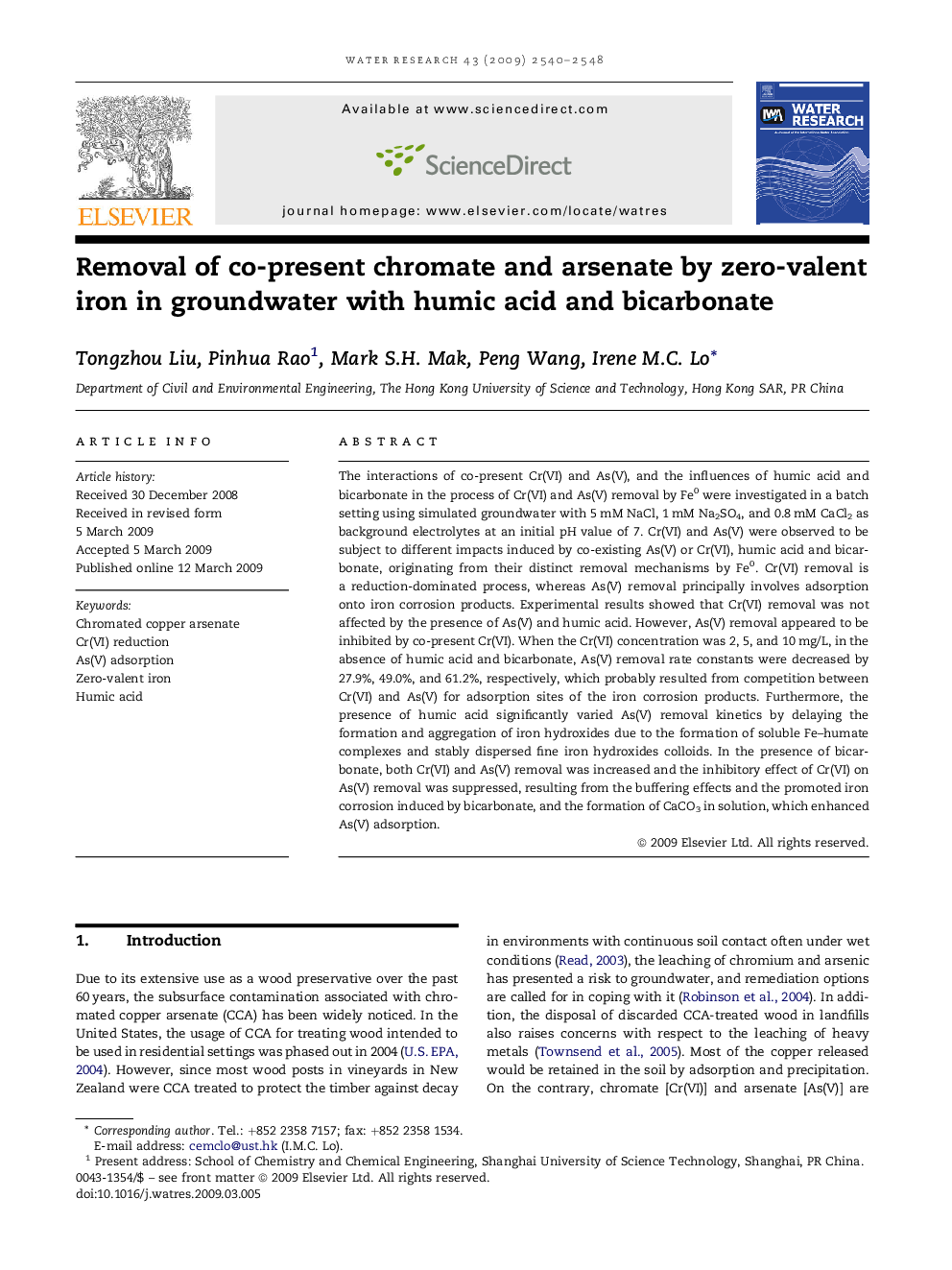| Article ID | Journal | Published Year | Pages | File Type |
|---|---|---|---|---|
| 4484874 | Water Research | 2009 | 9 Pages |
The interactions of co-present Cr(VI) and As(V), and the influences of humic acid and bicarbonate in the process of Cr(VI) and As(V) removal by Fe0 were investigated in a batch setting using simulated groundwater with 5 mM NaCl, 1 mM Na2SO4, and 0.8 mM CaCl2 as background electrolytes at an initial pH value of 7. Cr(VI) and As(V) were observed to be subject to different impacts induced by co-existing As(V) or Cr(VI), humic acid and bicarbonate, originating from their distinct removal mechanisms by Fe0. Cr(VI) removal is a reduction-dominated process, whereas As(V) removal principally involves adsorption onto iron corrosion products. Experimental results showed that Cr(VI) removal was not affected by the presence of As(V) and humic acid. However, As(V) removal appeared to be inhibited by co-present Cr(VI). When the Cr(VI) concentration was 2, 5, and 10 mg/L, in the absence of humic acid and bicarbonate, As(V) removal rate constants were decreased by 27.9%, 49.0%, and 61.2%, respectively, which probably resulted from competition between Cr(VI) and As(V) for adsorption sites of the iron corrosion products. Furthermore, the presence of humic acid significantly varied As(V) removal kinetics by delaying the formation and aggregation of iron hydroxides due to the formation of soluble Fe–humate complexes and stably dispersed fine iron hydroxides colloids. In the presence of bicarbonate, both Cr(VI) and As(V) removal was increased and the inhibitory effect of Cr(VI) on As(V) removal was suppressed, resulting from the buffering effects and the promoted iron corrosion induced by bicarbonate, and the formation of CaCO3 in solution, which enhanced As(V) adsorption.
